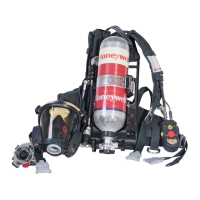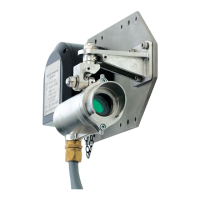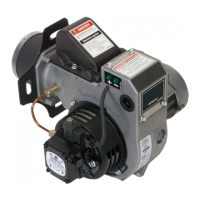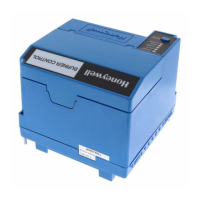35
MAN0530 Issue 10 - 11/09 Searchline Excel
2104M0506
3.7.2 Alignment Procedure
The following summarises the alignment procedure:
• Basicgasdetectoralignment,seesection3.7.3.
• Accurate alignment of Transmitter and Receiver using the appropriate
alignment telescope, see section 3.7.4.
• Power-upandverifyalignmentusingSHC1HandheldInterrogatorlinkedto
the Receiver, see section 3.7.5.
3.7.3 Basic Gas Detector Alignment
The basic procedure for aligning the Transmitter and Receiver units is the same.
(1) Loosen the two clamping nuts and four adjustment clamp screws on the Transmitter and
Receiver units until the units move freely in all axes.
(2) Point the Transmitter and Receiver units so that they face each other across the area to
be protected.
(3) Tighten the clamping nuts and adjustment clamp grubscrews on each unit until the unit
cannot be moved by hand.
This is the last time that these clamp nuts and grubscrews should need to be tightened.
Further tightening later on will affect the ne adjustment and should be avoided.
Note: The unit can still be moved by the adjustment screws.
3.7.4 Accurate Alignment
The procedure for accurately aligning the Transmitter and Receiver units is the same.
Before making any adjustments consult the following table to ensure that the correct type of
telescope is used with the Excel units that are to be aligned.
Excel Type Type of Trident telescope that SHC1 Handheld Interrogator
canbeused requiredtonalisealignment?
Trident Excel Latch-type No
Bayonet-type No
Non-Trident Excel Latch-type Yes
To tell the difference between the two types of Excel look at the front face of the units. The Trident-
type Excel units have three small pads on their front face, the non-Trident types do not.
These pads provide three contact points (hence the term Trident) for the alignment telescope
assemblydatummounttoensureaccuratexingofthetelescopesothatsubsequentalignment
of the gas detector units is precise.
The following diagrams illustrate the differences.
3. INSTALLATION AND OPERATION

